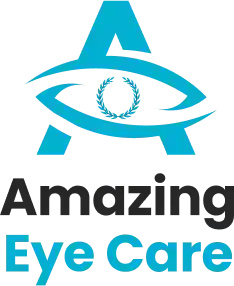Myopia, commonly known as nearsightedness, is a prevalent eye condition affecting millions of children worldwide. It causes blurry distance vision, making it difficult to see objects far away clearly. While glasses and contact lenses can correct vision, myopia often progresses throughout childhood, leading to stronger prescriptions and increased dependence on corrective lenses.
Fortunately, there’s a new wave of hope for myopic children: myopia control. These strategies aim to slow down myopia progression, potentially reducing the need for strong prescriptions and associated risks in adulthood.
Questions to ask while choosing the Eye Doctor for Myopia Control
If you’re an Atascocita parent seeking an eye care doctor specializing in myopia control, here are some crucial questions to ask:
1. Do you offer myopia control services?
Not all eye doctors are familiar with myopia control techniques. Start by confirming if the practice offers myopia control services and has experience managing children’s myopia.
2. What myopia control methods do you use?
Several myopia control methods exist, each with its advantages and limitations. Common options include:
- Low-dose atropine eye drops: These dilate the pupil slightly, reducing the eye’s ability to focus on near objects, potentially slowing myopia progression.
- Multifocal soft contact lenses: These lenses have multiple zones of focus, providing clear vision at all distances and potentially slowing myopia progression.
- Orthokeratology (Ortho-k): Rigid gas permeable lenses worn overnight gently reshape the cornea, temporarily correcting vision during the day and potentially slowing down myopia progression.
Discuss the available options with the doctor, considering your child’s age, lifestyle, and preferences.
3. What is your experience with myopia control?
Experience matters. Ask about the doctor’s experience in managing myopia in children, including the specific methods they offer. Inquire about their success rates and any published research or case studies associated with their practice.
4. How will you monitor my child’s progress?
Regular monitoring is crucial to assess the effectiveness of myopia control and adjust the approach as needed. Ask about the doctor’s monitoring schedule, including eye exams, prescription checks, and corneal topography (mapping) if applicable.
5. What are the potential risks and side effects of myopia control methods?
Like any medical intervention, myopia control methods may have associated risks and side effects. Discuss these openly with the doctor, understanding the potential benefits and drawbacks of myopia control each option before making a decision.
6. What is the cost of myopia control, and is it covered by insurance?
Myopia control can be an investment in your child’s future eye health. Ask about the costs associated with different methods, including consultations, examinations, and the chosen treatment itself. Inquire about potential insurance coverage and explore any financial assistance options offered by the practice.
7. Do you have testimonials or reviews from other parents who have used your myopia control services?
Hearing firsthand experiences from other parents can be insightful. Ask the doctor if they have testimonials or reviews from families who have opted for myopia control for their children. Reading positive experiences can build trust and confidence in the doctor’s approach.
8. How can I get my child involved in the decision-making process?
Empowering your child in their eye care journey is crucial. Ask the doctor how they involve children in understanding their condition and treatment options. Open communication and age-appropriate explanations can help your child feel more informed and invested in managing their myopia.
9. What are some additional resources you can recommend for learning more about myopia control?
Staying informed is essential. Ask the doctor for recommended resources, including websites, articles, or patient brochures, to deepen your understanding of myopia and myopia control options.
10. Do you offer consultations with other specialists, such as pediatric ophthalmologists, if needed?
Collaboration within the healthcare community can be beneficial. Ask if the doctor consults with pediatric ophthalmologists or other specialists for complex cases or if additional expertise is deemed necessary.
Conclusion
Choosing an eye care doctor for your child’s myopia control is a crucial decision. By asking these thoughtful questions and actively participating in the discussion, you can make an informed choice that prioritizes your child’s eye health and well-being. Remember, early intervention and a proactive approach can significantly impact your child’s future vision health.
Myopia Control in Atascocita

At Amazing Eye Care Atascocita, we understand the concerns that come with myopia in children. Our team, led by Dr. Le, is passionate about providing comprehensive eye care and exploring innovative approaches to manage your child’s myopia. We offer a range of methods for myopia control in Atascocita, including low-dose atropine, multifocal soft lenses, and Ortho-k, personalized to your child’s needs and preferences.
Regular monitoring and collaboration with other specialists, when necessary, are integral to our approach. We believe in building trust and ensuring a comfortable, positive experience for your child throughout their myopia control journey.
Don’t wait for your child’s myopia to progress. Contact Amazing Eye Care Atascocita today to schedule a consultation and discuss how we can help your child see a brighter future with clear vision.
Myopia control aims to slow down the progression of nearsightedness in children, potentially reducing the need for strong prescriptions and associated risks in adulthood. Early intervention is crucial for maximizing its effectiveness.
Like any medical intervention, there may be potential risks and side effects. Discuss these openly with your eye doctor to weigh the benefits and drawbacks before making a decision.
Encourage outdoor activities, limit screen time, and maintain regular eye exams. Early detection and healthy habits contribute significantly to overall eye health.
Common methods include low-dose atropine eye drops, multifocal soft contact lenses, and orthokeratology (Ortho-k). Each has its advantages and limitations, so discussing them with an eye doctor is essential.


